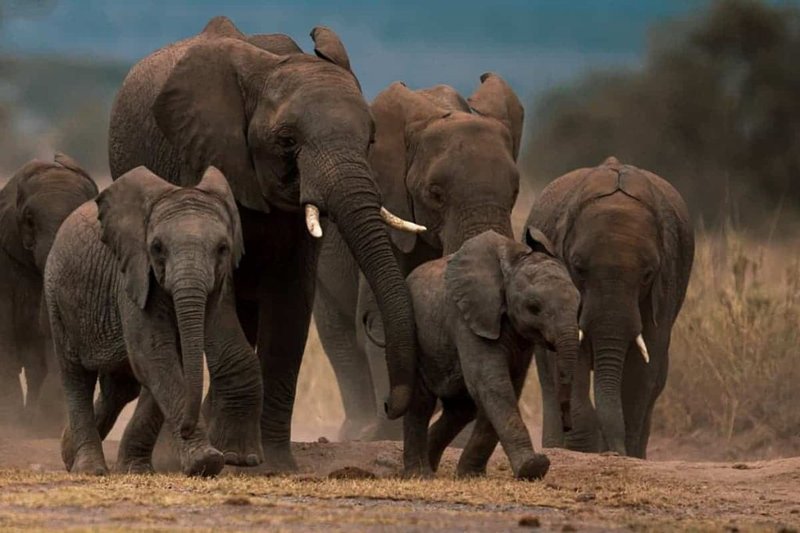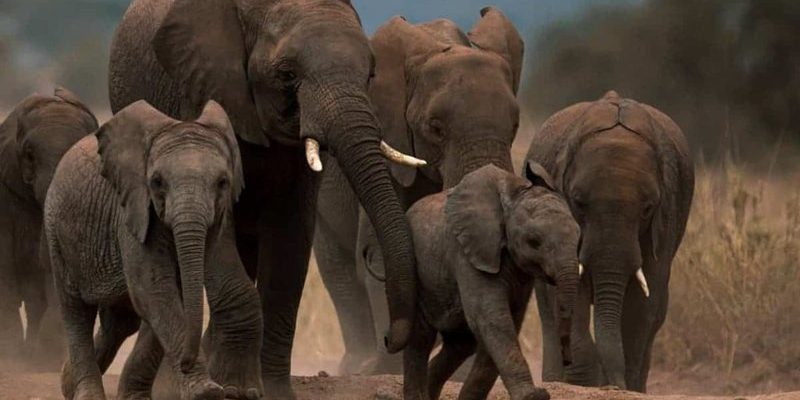
Imagine a world where these majestic giants no longer tromp through the grasslands—it’s a thought that might feel foreign yet increasingly probable. As we sip our coffee and dig into this topic, let’s explore the current status of these elephants, the challenges they face, and what’s being done to protect them.
The Current Status of African Bush Elephants
So, what’s the scoop? The African bush elephant, known scientifically as *Loxodonta africana*, is classified as vulnerable by the International Union for Conservation of Nature (IUCN). This is one step away from being endangered, which raises a significant red flag for conservationists. The elephant population has decreased by at least 30% over the last three generations, primarily due to poaching and habitat loss. Honestly, when you hear those numbers, it’s hard not to feel a little weight in your heart.
There are about 415,000 African elephants left in the wild today, compared to over 10 million a century ago. Luckily, awareness is growing, and more people are starting to understand why we should care about these incredible creatures. You might be wondering, why does their decline matter? Well, elephants are often called “keystone species” because they impact their ecosystems in profound ways.
The Role of Elephants in Their Ecosystem
Elephants contribute to their environment in several significant ways. They are natural architects of the landscape. When they forage for food, they knock over trees, which helps to maintain the savanna ecosystem. This behavior promotes biodiversity by allowing new plants to grow, ensuring that a mix of species can thrive.
They also create waterholes that benefit many other animals. You can think of them as gardeners of the wild, constantly shaping their surroundings in ways that support various life forms. Additionally, their dung is a fantastic fertilizer that helps disperse seeds, fostering new plant growth. Without elephants, entire ecosystems could slowly unravel.
Threats Facing the African Bush Elephant
Despite their importance, the threats to African bush elephants are daunting. The most significant challenge they face is poaching, driven mainly by the illegal ivory trade. In many parts of Africa, elephant tusks can fetch a high price on the black market, leading to widespread hunting. Just imagine being hunted for a piece of your body—it’s a scary thought, right?
Alongside poaching, habitat loss ranks as another major concern. As human populations grow, more land is transformed into agricultural fields, settlements, and roads. Sadly, elephants lose their natural homes and struggle to find food and water. This conflict between humans and elephants can lead to tragic encounters, where elephants are sometimes killed for raiding crops or property.
Climate change adds a layer of complexity to the plight of African bush elephants. Altered weather patterns lead to changes in their habitats, affecting food availability and water supply. Droughts can devastate elephant populations, as they depend heavily on water sources. These changes also put pressure on their survival, creating a cycle of challenges that can be difficult to break.
Global Conservation Efforts
Now, let’s talk about hope. Despite the challenges, there are numerous global conservation efforts aimed at protecting the African bush elephant. Organizations like the World Wildlife Fund (WWF) and African Wildlife Foundation (AWF) are hard at work to combat poaching and promote sustainable land management. These groups are not just fighting against extinction; they are working to educate local communities on the importance of elephants in ecosystems.
Anti-poaching initiatives have been effective in some regions, employing rangers to safeguard elephant populations. For example, in Kenya, the Great Elephant Census is a comprehensive survey that helps track populations and monitor trends. You might be surprised to learn that the data collected from these surveys is vital for policymakers in understanding how to allocate resources effectively.
Community Involvement: A Key to Success
Community involvement plays a crucial role in these conservation efforts. Programs that engage local communities in protecting elephants often see greater success. When people understand the value of elephants—not just as majestic creatures but as critical parts of their community’s livelihood—there’s a greater incentive to protect them. For example, eco-tourism initiatives allow locals to benefit from visitors drawn to see elephants in their natural habitat.
How You Can Help
Feeling inspired yet? There are plenty of ways for you to get involved and help protect the African bush elephant. Supporting reputable organizations that focus on elephant conservation is a fantastic start. You can donate, volunteer, or even plan a visit to a sanctuary focused on wildlife protection.
Additionally, spreading awareness about the plight of elephants can make a difference. Sharing information on social media or discussing the issues with friends can spark conversations and inspire action. Let’s face it; every bit helps, and when people come together, they can create meaningful change.
Adopting Sustainable Practices
Even small actions in your daily life can contribute to elephant conservation. Adopting sustainable practices helps protect their habitats. Simple choices like reducing plastic use, supporting sustainable products, and being mindful of where your food comes from can go a long way. The less impact we have on the environment, the more we help preserve spaces where elephants roam freely.
In short, the African bush elephant is indeed facing serious challenges. While they’re not classified as endangered yet, their vulnerable status calls for urgent action. From poaching and habitat loss to the effects of climate change, several factors threaten their survival. But with ongoing global conservation efforts and community involvement, there’s still hope.
So, next time you see an image of these magnificent creatures, remember their importance and the role we all play in protecting them. Whether through direct action or simply sharing information, we can work together to ensure elephants continue to roam our earth for generations to come.

